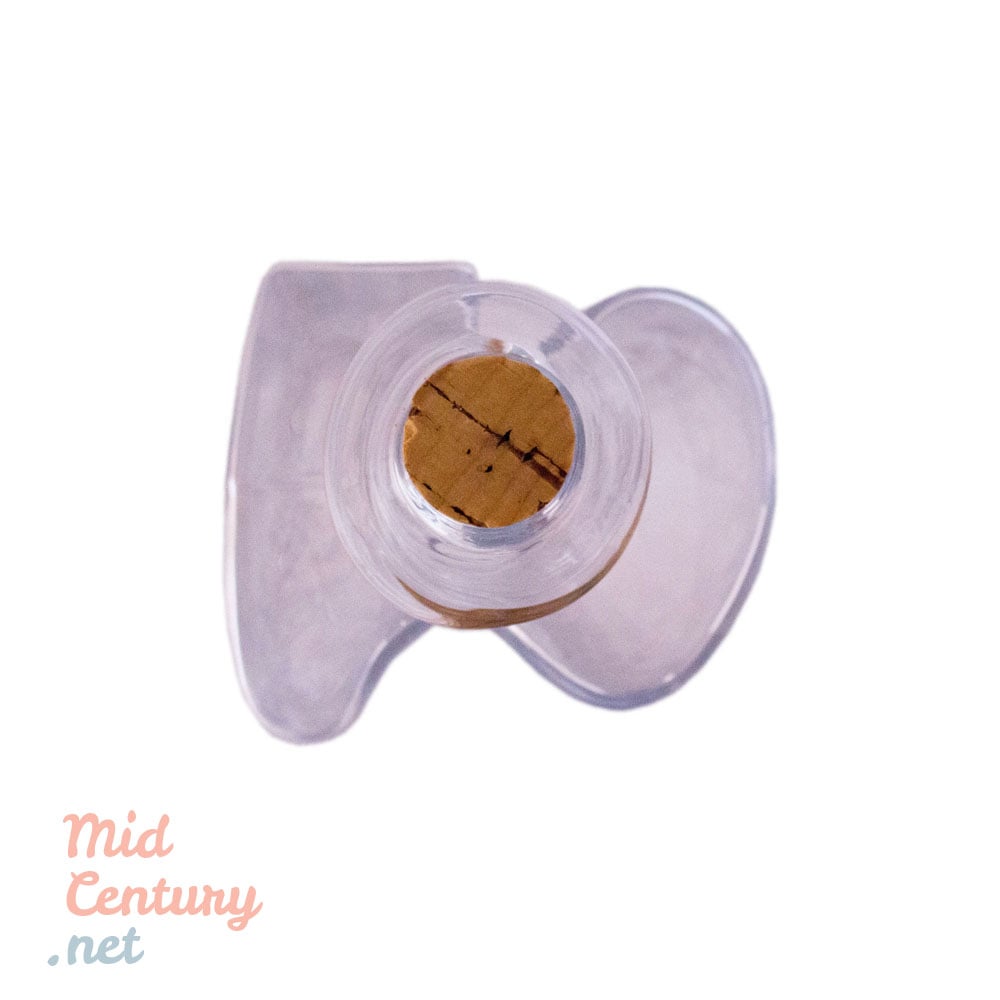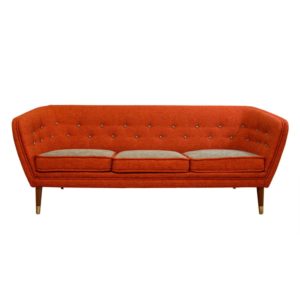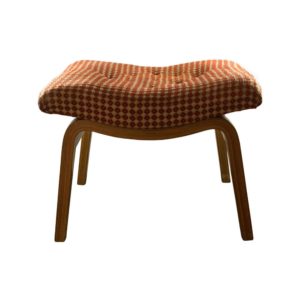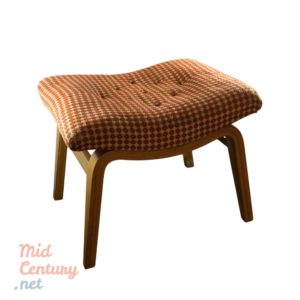Hivert decanter made by Holmegaard
40 €
The Hivert decanter (also known as The Swig Jug) was designed by Holmegaard creative team in 1970 (by Hjørdis Olsen and Charlotte Rude). The shape is designed specifically for a strong handhold. Initially used only for schnapps, it is still suitable for any kind of spirits.
Out of stock
You may also like
-
Sale
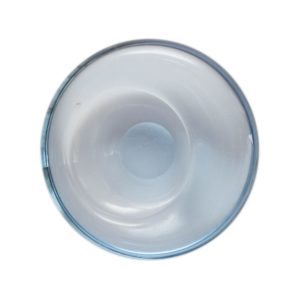
Little Akva Askebæger bowl by Per Lütken
Glass & Ceramics, Home Accessories, Kitchenware & Tableware, Special Discounts35 €
Little Akva Askebæger bowl by Per Lütken
Glass & Ceramics, Home Accessories, Kitchenware & Tableware, Special DiscountsAqua bowl designed by Per Lütken for Holmegaard. This model is part of the Akva series, which was a huge success and remained in production for more than two decades between 1953 and 1974. Signed and identified on the bottom, “HOLMEGAARD PL”. Also on bottom has the production number, 15737. Has a small chip on the rim and some age-related marks. However, all in all it is in a good vintage condition. A rare piece made from hand-blown crystal (just a small part of this series was made from crystal and not from glass). The Akva series includes items sold under different trade marks and line names: Askebaeger, Dukling, Fiona, Hellas, Lysestage, Menuet, Rondo, Selandia, Thule, Umanak, Surf etc.35 € -
Sale

Round Akva Askebæger bowl by Per Lütken
Glass & Ceramics, Home Accessories, Kitchenware & Tableware, Special Discounts35 €
Round Akva Askebæger bowl by Per Lütken
Glass & Ceramics, Home Accessories, Kitchenware & Tableware, Special DiscountsAqua Askebæger designed by Per Lütken for Holmegaard. This model is part of the Akva series, which was a huge success and remained in production for more than two decades between 1953 and 1974. Signed, identified and dated on the bottom, “Holmegaard 19PL56” (Per Lütken signed almost always monogrammed with initials falling between the 4 digits of the year). Has a small chip on the rim and some age-related marks. However, all in all it is in a good vintage condition. A rare piece made from hand-blown glass. The Akva series includes items sold under different trade marks and line names: Askebaeger, Dukling, Fiona, Hellas, Lysestage, Menuet, Rondo, Selandia, Thule, Umanak, Surf etc.35 €
Additional information
| Designer/Artist | |
|---|---|
| Maker | |
| Design Period | 1970 |
| Country of Origin | |
| Identifying Marks | Labeled by Maker |
| Restoration, Damages | Minor wear consistent with age and use |
| Material(s) | |
| Color(s) | |
| Weight | 565 g |
| Dimensions (H x W x D) | 15 x 8.5 x 10 cm |
| Duties Notice | If your delivery address is not in the European Union, Iceland, Liechtenstein, Norway, or Switzerland, please be advised that import duty is not included in the prices you see online |
Product Enquiry
About Mid-Century
A decanter is a vessel that is used to hold the decantation of a liquid (such as wine) which may contain sediment. Decanters, which have a varied shape and design, have been traditionally made from glass or crystal. Their volume is usually equivalent to one standard bottle of wine (0.75 litre).
A carafe /kəˈræf/, which is also traditionally used for serving alcoholic beverages, is similar in design to a decanter but is not supplied with a stopper.
Throughout the history of wine, decanters have played a significant role in the serving of wine. The vessels would be filled with wine from amphoras and brought to the table where they could be more easily handled by a single servant. The Ancient Romans pioneered the use of glass as a material. After the fall of the Western Roman Empire, glass production became scarce causing the majority of decanters to be made of bronze, silver, gold, or earthenware. The Venetians reintroduced glass decanters during the Renaissance period and pioneered the style of a long slender neck that opens to a wide body, increasing the exposed surface area of the wine, allowing it to react with air. In the 1730s, British glass makers introduced the stopper to limit exposure to air. Since then, there has been little change to the basic design of the decanter.
Although conceived for wine, other alcoholic beverages, such as cognac or single malt Scotch whisky, are often stored and served in stoppered decanters. Certain cognacs and malt whiskies are sold in decanters such as the 50-year-old single malt Dalmore or the Bowmore Distillery 22 Year Old.
Liquid from another vessel is poured into the decanter in order to separate a small volume of liquid, containing the sediment, from a larger volume of “clear” liquid, which is free of such. In the process, the sediment is left in the original vessel, and the clear liquid is transferred to the decanter. This is analogous to racking, but performed just before serving.
Decanters have been used for serving wines that are laden with sediments in the original bottle. These sediments could be the result of a very old wine or one that was not filtered or clarified during the winemaking process. In most modern winemaking, the need to decant for this purpose has been significantly reduced, because many wines no longer produce a significant amount of sediment as they age.




